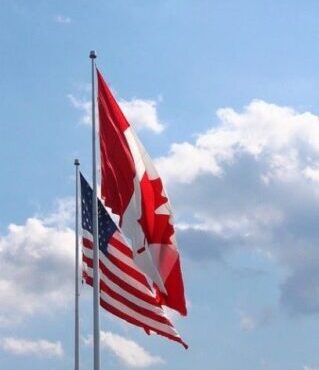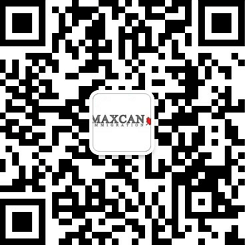

Flagpoling – A way to leave and re-enter Canada
Posted on 05/12/2019
Flagpoling is when you cross the U.S./Canada border from Canada into the U.S. and then immediately turn around and re-enter Canada. In other words, circle around the flagpole. As you re-enter Canada, you then apply for immigration services – like a work permit or study permit in most cases – that are normally handled by an IRCC Case Processing Centre inside Canada and are mostly done through Visa Application Centres abroad.
People do this for several reasons:
- They may be obliged to leave Canada and apply from abroad, as is usually the case when you are in Canada on a tourist visa and then decide to apply for a study or work permit.
- They may be able to apply from within Canada for an extension of a study permit, for example, but have a deadline they have to meet. Because IRCC’s case processing centres are overloaded with high volumes of applications, the waiting times mean that you may not be able to obtain an extension to a study permit before the program’s start date.
- As far as Canadian immigration law is concerned, it does not appear to be illegal to flagpole.
However, the Canada Border Services Agency (CBSA) is not staffed to handle large numbers of work or study permit applications, as their job is usually determining if people arriving at their Port of Entry (POE – a land or marine border crossing, or an airport) are admissible into Canada or are a security, or health, or other, risk and are to be turned away. In other words, CBSA is really an enforcement agency rather than an administrative agency which is equipped to handle permit applications.
Because incidents of flagpoling are reportedly on the rise, it appears that the CBSA has been attempting to restrict and discourage the practice since May 2018 at certain Canada/US border crossings in Southern Ontario, and Quebec. The restrictions imposed by CBSA are as follows:
At the Saint-Bernard-de-Lacolle and at Saint-Armand/Phillipsburg border crossings in Quebec, there are restricted hours for processing work and study permit applications: by individuals who currently reside in Canada, posses a valid work or study permit, and travelled to the USA for the sole purpose of presenting their permit application at a Canadian port of entry.
- Monday to Thursday: noon to 7:00 p.m.
- Saturday: from 9 a.m. to 5 p.m.
- If you arrive at the border crossing and try to enter Canada at some other time, you will be admitted into Canada if you are admissible but your study or work permit application will NOT be processed and you will be directed to apply at an IRCC case processing centre inside Canada.
- Even if you arrive during the above hours you may find that CBSA is unable to process your work or study permit application.
At the Peace Bridge (Fort Erie), Queenstown-Lewiston Bridge (Niagara-on-the-Lake), and Rainbow Bridge (Niagara Falls), in Southern Ontario there are also restricted hours for the same individuals as described above (flagpolers looking to apply for a work or study permit basically).
- Tuesday, Wednesday, and Thursday: 8 a.m. to midnight (12 a.m.)
- If you arrive at the border crossing and try to enter Canada at some other time, you will be admitted into Canada if you are admissible but your study or work permit application will NOT be processed and you will be directed to apply at an IRCC case processing centre inside Canada.
- Even if you arrive during the above hours you may find that CBSA is unable to process your work or study permit application.
What the Canada Border Services Agency seems to be doing is a gradual restriction of applications for work or study permits at border crossings from BC to the Maritimes. For now, these crossings in Quebec and Southern Ontario seem to be the only border crossings where the restrictions are in place, but that may change in the future. There are several ways the CBSA and IRCC can handle the problem of much higher numbers of people applying for a work or study permit at a border crossing:
- Provide more resources (personnel and equipment – especially computers) to the CBSA in order to improve their capacity to process work and study permit applications. Or,
- Restrict the practice of flagpoling. Or,
- Lift the restrictions on allowing a change of status on the part of temporary visitors still inside Canada. This restriction on change of status (for example, changing your status from a temporary visitor (tourist) to an international student, or to a foreign worker) is why in most cases you have to leave Canada if you wish to apply for a study or work permit.
For now, unfortunately, it seems that CBSA and IRCC have chosen the most cautious option and are trying to restrict the practice of flagpoling. So, it means you should stay updated on the hours you are allowed to apply for a work or study permit at these and even at other border crossings.
Furthermore, you should be aware that if you attempt to re-enter Canada at the US/Canada border, you may find yourself caught in a no-man’s-land if:
- Canadian immigration officials deny you re-entry into Canada because of concerns about your admissibility (which could be the result of a minor error on your part rather than security, health, or criminal concerns), or
- U.S. immigration officials detain you on the U.S. side of the border.
As well, if you immediately turn around and try to enter Canada, you apparently may have to report your incident of flagpoling every time you enter the U.S. in the future.
Flagpoling is clearly a bit of a grey area, because while it is not strictly illegal, it is viewed with disfavour by the very officials responsible for your entry into Canada. If you have to use it in order to save time and meet a deadline, be warned. It might backfire and you might either:
- Be denied entry back into Canada, or
- Have to apply through an IRCC case processing centre and miss your deadline.
Posted in Tips and tagged Permanent Residence, Study Permit, Work Permit




